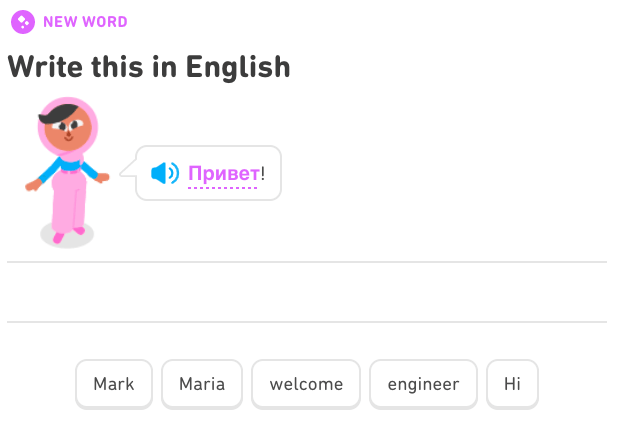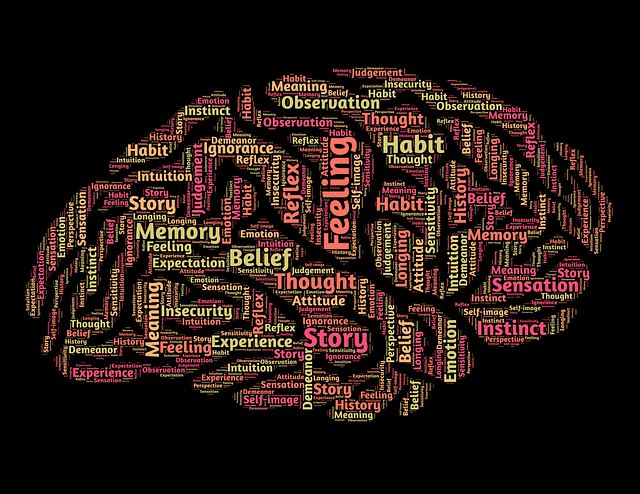Every journey begins with a single step. This post will guide you on how to start your language learning journey, whether you’re a complete beginner or returning to language studies after a break. We’ll explore popular resources like Duolingo and discuss other key factors to consider when embarking on your language-learning adventure.
With over 10 years of experience learning languages, sparked by a school exchange trip to Germany, I’ve developed a passion for language acquisition. I’ve continued to learn, expanding my linguistic horizons to include Spanish, Latin, and even Polish. Today, I’m a German teacher in Australia, and I thoroughly enjoy sharing my love of languages with my students.

Duolingo: A Fun and Engaging Starting Point For Language Learning
Duolingo has become a hugely popular language-learning app, and for good reason. With a constantly growing library of courses, it offers a fantastic starting point for many language learners, myself included. It’s particularly well-suited for native English speakers, as Duolingo boasts a wide range of courses in many of the most spoken languages in the world, catering to a diverse range of learners.
One of the things I appreciate about Duolingo is its gamified approach. It makes learning fun and engaging through interactive exercises and a gradual progression of difficulty. You start with basic vocabulary and gradually build upon your knowledge, which is a very effective way to learn.
However, I’ve found that Duolingo sometimes falls short in providing in-depth explanations of grammar rules. While this isn’t necessarily a dealbreaker, it can sometimes lead to confusion, especially when encountering more complex grammatical concepts in the course without any real explanation as to why. For example, Polish has different endings to nouns but there isn’t an explanation provided when this is first encountered. In addition, Polish verbs change depending on the pronoun that is being used, and it would be useful to provide a table showing this to help you see the patterns.
Learning languages with different alphabets can also present a unique challenge. For example, encountering Russian Cyrillic for the first time can be a bit daunting. If you were to start a course in Russian, your first word would look like the below image, without any introduction to the new characters you’re seeing for the first time.

Despite these minor drawbacks, Duolingo remains an excellent free, effective, resource for language learners. The “heart” system, while sometimes frustrating, encourages consistent practice. These issues don’t take away from the ability to learn through this app. If you’re unsure if Duolingo is your speed, I recommend that you give it a try anyway. There’s not really anything you can lose, and as Duolingo is continually improving and growing, I won’t be surprised to see these issues resolved in the future. There are also some hidden gem languages on Duolingo that you might find surprising, and that motivate you just enough to try Duolingo.

Beyond Duolingo: Exploring a World of Language Learning Resources
While Duolingo has become a juggernaut in the language learning world due to its user-friendly approach, it’s certainly not the only option out there. I still remember using traditional flashcards back in the day – a method that serves as the foundation for many digital language learning tools like Duolingo.
Enter Memrise, another free online language-learning platform I’ve found quite useful. Similar to Duolingo, Memrise offers a gamified approach with interactive exercises. However, Memrise stands out for its focus on visual elements. Theirs goes beyond just words – you’ll see pictures and even a little flower that blossoms as you master each word. It can be a great way to solidify your learning in a more engaging way.
One difference between Memrise and Duolingo is that Memrise contains community-created courses as well as maintains its own language courses. This means, for example, there are language courses that provide the vocab for reading Harry Potter in other languages, as well as learning the individual letters of the Hebrew language. This means your learning can be a little more specific to your needs, presuming a course has been created. Unfortunately, Memrise is on the way towards removing community courses, however, they are – at this stage – only accessible until the end of 2025, they are also useable via https://mylittlewordland.com/, a site created by another person to try to preserve the benefits that this provided to the community.

Finding Your Language Learning Style: What Works Best for You?
If you have given Duolingo a shot and aren’t quite convinced that it’s for you, there are other language learning methods available to you. The beauty of language learning lies in its diversity – there’s no one-size-fits-all approach. While Duolingo offers a fantastic starting point, it’s crucial to discover what learning style resonates best with you.
For some, independent study at home might be the ideal path. This could involve utilizing textbooks, immersing yourself in music and movies, or even creating your own flashcards. Others may thrive in a more structured environment, opting for private tutoring or attending language classes. You might even opt to try your hand at changing some of your favourite games into your target language, to learn the language while playing video games.
For the truly adventurous, language learning can be seamlessly integrated into travel experiences. While many international workplaces operate in English, there are numerous opportunities to work and travel simultaneously, immersing yourself in a new language and culture.
Finally, the rise of AI has ushered in a new era of language-learning tools. Conversational AI platforms offer interactive and personalized learning experiences, providing valuable practice in speaking and listening.
If you’ve completed the Duolingo courses available for your language and are seeking new avenues for language learning, I encourage you to explore the diverse options available. Consider your learning style, your available resources, and your personal goals to find the approach that best suits your needs.

Why You Should Include Anki In Your Language Learning Toolkit
No matter which language learning method you choose, I highly recommend incorporating Anki into your toolkit. At its core, language learning often involves learning and memorizing new vocabulary and grammatical structures. While platforms like Duolingo and Memrise gamify this process, Anki does this in a more direct way, though in a customizable approach.
Essentially, Anki is a powerful flashcard system that allows you to create your own flashcards or download pre-made decks from the community. By consistently reviewing these flashcards, you can significantly improve your vocabulary retention and recall. This makes Anki an invaluable tool for anyone serious about language learning.
Anki can be particularly beneficial when supplementing other learning methods, such as reading books, listening to music, or conversing with native speakers. You can easily add new words and phrases encountered during these activities to your Anki decks, creating a personalized learning experience.
Beyond vocabulary, Anki can be a valuable asset for various academic pursuits. Medical students, for example, frequently rely on Anki to memorize complex medical terminology and concepts. There are methods to use Anki to cram for an exam or test, as well as to learn vocabulary to stay with you for years and years. This app is very versatile and highly recommended as a learning tool, no matter your learning method. There are some helpful tips and tricks that can help start you on the right path to using Anki if you are looking for further information.
While Anki is free on most platforms, it does require a small fee on Apple devices. However, I believe the investment is well worth it for the significant benefits it offers, as well as providing support to the creator of Anki. There are some mimic apps out there that are free, however, they do not provide the same sophistication of spaced repetition that Anki provides. It is this spaced repetition that makes Anki so invaluable.

Setting Realistic Goals And Discovering Your Motivation For Language Learning
Before embarking on your language learning journey, it’s crucial to define your motivations and set realistic goals. Are you planning an upcoming international trip to a Spanish-speaking country and eager to navigate your way around? Maybe you want to take a gap year and work in another country just for a change of scenery. Do you want to connect with family members who speak a different language? Perhaps you’re simply curious about the world and eager to explore different cultures through the lens of languages that aren’t your mother tongue.
Whatever your reasons may be, understanding your motivations will fuel your commitment and keep you going during challenging times.
It’s important to remember that language learning is a marathon, not a sprint. While some may achieve fluency quickly, it’s generally a long-term endeavour. Estimates suggest that achieving fluency can take anywhere from 600 to 2,200 class hours, depending on the language and your individual learning style. This is just a general guideline, of course, and factors like your dedication, learning style, and frequency of practice will significantly impact your progress. This means that even learning the easiest language on Duolingo, you won’t be speaking like a native after one or two hours.
Regardless of your age or experience, language learning offers a wealth of benefits beyond simply acquiring new vocabulary and grammar. It enhances cognitive function, improves memory, and fosters greater cultural understanding. By learning a new language, you’re not just learning a new way to communicate; you’re gaining a deeper understanding of different cultures and perspectives.

Why Consistency Is Key: Building a Sustainable Language Learning Habit
Consistency is paramount in language learning. It’s a marathon, not a sprint, and expecting to become fluent overnight is unrealistic. Building strong language learning habits is crucial for long-term success.
To cultivate consistency, establish a dedicated time and space for language learning. This could be 15 minutes each morning before breakfast, a half-hour during your commute, or an evening session before bed. The key is to find a time and place where you can minimize distractions and focus on your studies.
Start small and gradually increase your study time. Don’t tell yourself that you’re going to sit there for 90 minutes learning a language, particularly if this is your first time learning a language. You’ll get bored, and your brain won’t be able to take on all the new things you’re learning. Aim for short, consistent sessions rather than infrequent marathon sessions. Begin with 10-15 minutes of focused study and gradually increase the duration as you build momentum.
By consistently dedicating time to your language learning, you’re not just acquiring new skills; you’re cultivating a valuable habit that will serve you well throughout your language learning journey.

Staying Motivated: Tips for Consistent Language Learning
Maintaining motivation is crucial for any long-term endeavour, and language learning is no exception. To stay inspired, it’s essential to set clear, personal goals. These goals should be meaningful to you – don’t just adopt someone else’s motivation. If your goals aren’t truly your own, they’ll likely lose their power to inspire you over time.
One effective way to stay motivated is to gamify your learning experience. Duolingo does this brilliantly by incorporating elements like streaks, points, and a competitive league system. These features make learning fun and engaging, encouraging you to return to the app day after day.
You can replicate this gamification in your own learning journey. Set small, achievable goals, and reward yourself for reaching them. Whether it’s a small treat, a dedicated “me time” session, or simply acknowledging your accomplishment, these rewards can provide a significant boost to your motivation.
If you have a friend who’s also learning the same language, consider turning your learning journey into a friendly competition. You can set shared goals, track your progress together, and celebrate each other’s successes.
Finally, if you’re working with a tutor or engaging in conversation with native speakers, set specific, achievable goals for each interaction. For example, aim to have a conversation about a particular topic, use a specific grammar structure, or express a particular emotion. This provides immediate feedback and a sense of accomplishment as you see your hard work paying off.
Remember, motivation can fluctuate. Don’t be afraid to experiment with different strategies and adjust your approach as needed. The key is to find a learning style and motivational system that works best for you and keeps you inspired on your language-learning journey.

Conclusion: Your Language Learning Adventure Awaits
Throughout this post, I’ve shared some of the insights I’ve gained on my own language-learning journey. I’ve learned that consistency is key and that finding a learning method that resonates with you is crucial.
Like many students, I initially struggled with maintaining consistent motivation. I experienced periods of intense focus followed by periods of neglect, which inevitably impacted my progress. However, over time, I’ve developed strategies to stay motivated and overcome these challenges.
Don’t let setbacks discourage you. Even after periods of inactivity, you might be surprised at how quickly you can re-engage with the language and recall previously learned material.
One of the most rewarding aspects of language learning is the ability to connect with people from different cultures. Even a few simple phrases can open doors to meaningful interactions and foster a deeper understanding of the world. Imagine the joy of encountering someone who is attempting to speak your native language – it’s incredibly rewarding!
Embrace the journey, experiment with different learning methods, and don’t be afraid to celebrate your progress along the way. The rewards of language learning extend far beyond simply acquiring new vocabulary and grammar – they enrich your life, broaden your horizons, and connect you with the world in profound ways.
- Should Everyone In The World Speak A Universal Language?

- The Power of Immersing Yourself In A Language For Learning

- Start Your Language Learning Journey: Duolingo And Other Methods

- Does Learning A Language Help You Learn How Others Think

- Can You Learn a Language Without Learning Its Culture?

- Unlock Fluent Expression: Sentence Builders Across Languages

- Hidden Gems: Underrated Duolingo Languages Worth Learning

- The Ultimate German Pronunciation Guide

- Where To After Finishing Duolingo For Language Learning










